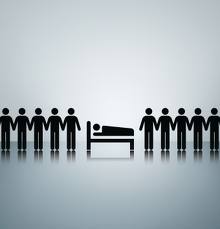 Do you know where your employees are?
Do you know where your employees are?
Ask any business owner or executive about the impacts of Healthcare costs on their business and you will get an EARFUL. Healthcare accounts for 15.4% of payroll costs…and that percentage is increasing. Today’s business enterprise spends significant time and resource energy on the aggressive management of that number. Very little if any savings will come from that number (unless REAL healthcare reform happens; don’t hold your breath for it)…today the exercise is about holding the line. Just keep treading water.
An unexplored SAVINGS opportunity does exist; it’s not as sexy or polarizing as healthcare costs BUT it can drive very real cost savings.
Did you know that the total cost of unplanned employee work absences – not vacation or personal time – represents 9.2% of the average company’s payroll expense? (Source – Marsh Mercer 2008 online survey http://www.kronos.com/AbsenceAnonymous/)
Why?
Absences impact your business in three ways:
- Direct costs for the benefits or wages paid to employees while absent,
- Indirect costs for lost productivity or the replacement worker expenses to “cover”
absences and minimize loss of productivity, and - Administrative expenses, whether due to internal staffing and overhead, or to vendor
services.
The impact on Productivity is even more alarming:
Absenteeism or “Incidental unplanned absences” result in the highest net loss of productivity per day (i.e., missed or postponed work not being covered by others): 21%versus 15% for planned absences and 17% for extended absences.
Absenteeism is a MANAGEABLE cost driver and a sound Ergonomics strategy can help.
How?
Trapped in that 9.2% number are unreported employee pain and discomfort issues. In many cases, ERGONOMIC workplace issues are the cause of this pain and discomfort. A recent study from Spain estimates that > 6.4 million people take an unplanned absence each week citing muscular-skeletal problems as the reason. Out of these, 40.9 per cent of the work force experiencing lower back pain, 40 per cent with neck pain, and 22.9 per cent with upper back pain.
Poor environmental and task design within the work environment drives this pain and discomfort. ERGONOMICS can help.
Do you have an in-house program that documents absenteeism drivers? Probably not. Our ERGOLAB team works with business leadership to build a proactive approach to absenteeism through;
- Employee pain and discomfort surveying,
- Task assessment and redesign consulting and
- Ergonomics education and training
Interested ? We’d love to hear from you – fpisano@ergonomicedge.com or 401 529 8398




